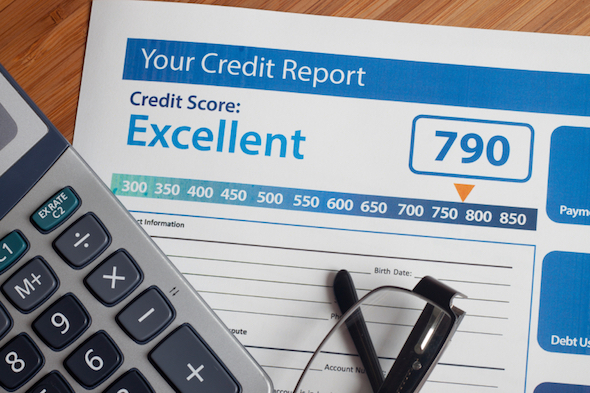Learning how to properly manage a bank account requires some trial and error, and just about everyone makes a mistake at some point. If you have run into trouble in the past with overdrafts or you simply have bad credit, opening a new bank account can be more difficult than usual. Second chance checking accounts are designed for people who’ve made a misstep or two along the way. If you are in need of a fresh start, this is how to open a second chance checking account.
A financial advisor can help you determine the best banking solutions based on your financial situation and future goals.
What Is a Second Chance Checking Account?
A second chance checking account is a type of bank account designed for individuals who have a history of banking issues, such as overdrafts, bounced checks or account closures. These accounts offer a way to rebuild financial standing while giving you access to standard banking services. While they function similarly to regular checking accounts, they may come with more restrictions and fees.
Most second chance accounts include features like debit cards, direct deposit and online banking. However, they may have daily withdrawal limits, bank fees, and no access to overdraft protection. These conditions are meant to encourage better money management and reduce the risk of repeated account misuse.
Over time, if the account is maintained in good standing, such as avoiding overdrafts and maintaining a positive balance, many banks offer the opportunity to upgrade to a standard checking account. This can help users regain access to more favorable banking terms and improve their overall financial credibility.
How to Improve Your Standing With a Second Chance Account
To improve your standing with a second chance checking account, start by using the account consistently and responsibly. Set up direct deposit if possible, and use the account for regular expenses like bill payments and everyday purchases. Make sure you monitor your balance closely to avoid overdrafts or declined transactions, which can trigger fees and harm your standing with the bank.
Pay attention to any fees or limits associated with the account. Some second chance accounts have restrictions on daily withdrawals or charges for paper statements. Knowing the terms of your account can help you avoid unnecessary costs. It’s also a good idea to opt into email or text alerts to keep track of your account activity in real-time.
After several months of consistent use, you can use your positive account history to upgrade to a standard checking account. This might include increased access to features like overdraft protection, higher withdrawal limits and lower fees. A well-managed second chance account can help rebuild trust with financial institutions and improve your overall financial profile.
Compare Your Options

Second chance accounts are offered by a number of banks both large and small, but they’re not all the same. When you’re shopping for a checking account, it’s important to know all the details.
Pay attention to the fees the bank charges, what services are available and whether there is an opportunity to convert your second chance checking account into a traditional account in the future. Account terms vary widely from one bank to another, so it is worth your time to research all the options.
At PNC Bank, for example, you can get a Foundation Checking account if you’re willing to pay a $5 monthly service fee, plus a monthly $2 charge for paper statements.
With the Wells Fargo Everyday Checking package, the monthly fee is $10, but you can waive it if you make qualifying debit transactions or direct deposits. You also have access to mobile and online banking features, as well as automatic transfers to a linked savings account.
As a general rule, more features usually mean higher fees, but if there are ways to get around them, such as maintaining a minimum balance or making qualifying deposits, then all the extra perks could be well worth it.
Check Your Credit
When you apply for a new checking account, the bank will typically pull your credit report, along with your ChexSystems profile. ChexSystems is the national consumer credit service that’s used by most banks to report negative account history. If you’ve been denied a regular bank account at some point, it’s likely because of what’s on your ChexSystems report.
It helps to review your credit reports from each of the three major reporting bureaus, as well as ChexSystems, so you have an idea of what the bank will see when you apply for a second chance account. If you see errors or inaccuracies on any of your reports, you have the right to dispute the information and have it removed or corrected. The more you are able to minimize those negative remarks, the easier it will be to qualify for a second chance account.
Consider a Credit Union
Many credit unions offer second chance accounts with a number of advantages over traditional banks.
Credit unions operate on a not-for-profit basis, so they emphasize customer service over big revenue. Because they’re usually much smaller than banks, their overhead costs are typically lower, leading to fewer fees.
Keep in mind that even the best credit unions require certain criteria to join, such as living in a particular area or working for specific employers. If you qualify, however, you can enjoy other benefits in addition to second chance checking, such as lower rates on personal loans and savings on insurance.
Alternatives to Second Chance Checking Accounts
If a second chance checking account does not meet your needs, consider using a prepaid debit card with online account features. Many prepaid cards allow for direct deposit, bill payment and mobile check deposit. These cards don’t require a credit check and often do not use ChexSystems, so they can be a good choice if you’ve been denied a traditional account. However, be aware that prepaid cards may come with fees for reloading, monthly maintenance or ATM use.
Another option is to look for online banks that don’t use ChexSystems or other account screening services. These banks may offer standard checking accounts with low fees, no minimum balances and access to online tools. While features and availability vary, some online-only institutions are more flexible in their approval processes and may be a good alternative for rebuilding your banking history.
You could also consider joining a credit union. Some credit unions offer regular checking accounts to people with negative banking history, especially if you have a relationship with the organization or meet certain membership criteria. Credit unions often have lower fees, more personalized service and a willingness to work with members who are trying to reestablish financial stability.
Bottom Line

If you’re tired of using a prepaid debit card to manage your money or it’s no longer convenient to go bankless, a second chance checking account may be the solution. Be sure to read over the fine print to ensure that you choose the right one to fit your needs.
Banking Tips
- Finding a financial advisor doesn’t have to be hard. SmartAsset’s free tool matches you with up to three financial advisors who serve your area, and you can interview your advisor matches at no cost to decide which one is right for you. If you’re ready to find an advisor who can help you achieve your financial goals, get started now.
- If you’re looking for a new savings account, SmartAsset’s review of the best savings accounts is a good place to start. This review gathers key data points such as annual percentage yield, fees and minimum opening balance and identifies the institutions that have the best overall offerings.
Photo credit: ©iStock.com/YinYang, © iStock.com/danielfela, © iStock.com/Timurpix
